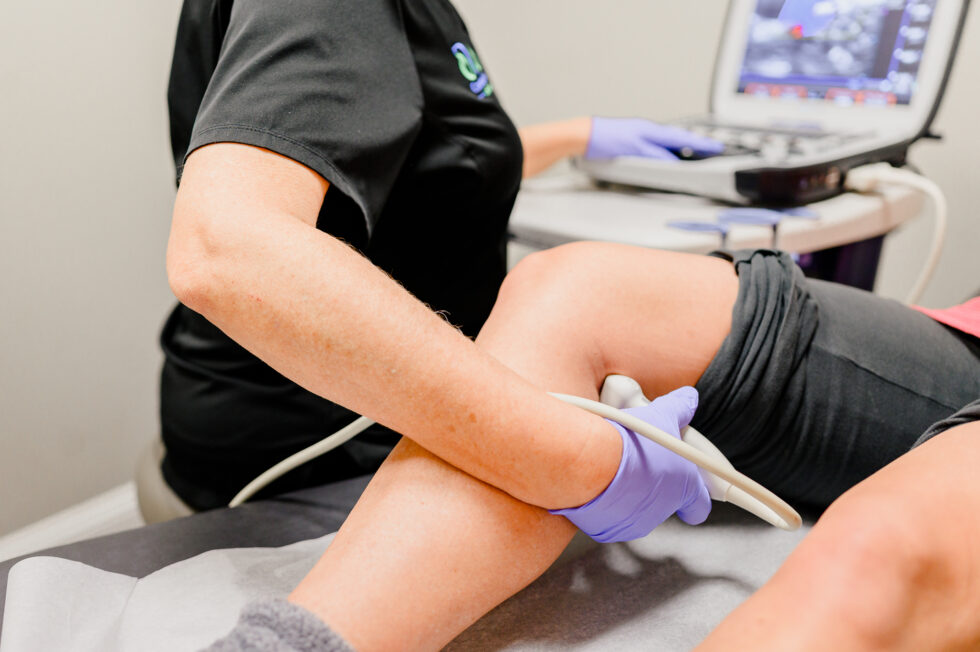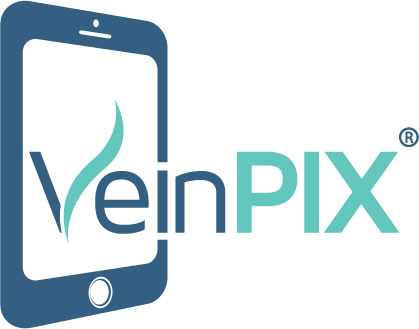Tired of dealing with aching legs, bulging veins, and feeling self-conscious? You’re not alone. Imagine feeling lighter on your feet, enjoying activities without pain, and wearing what you want confidently. Vein treatments today are advanced and more comfortable than ever. If you’re ready to explore solutions, this guide is for you. Let’s talk about all things vein surgery!
What is Vein Surgery?
Vein surgery encompasses a range of procedures aimed at treating varicose veins and other venous issues. These surgeries target the underlying cause of venous problems, restoring proper blood flow and alleviating symptoms such as pain, swelling, and fatigue. People choose vein surgery to address both medical concerns and cosmetic issues related to their veins.
Why Choose Vein Surgery?
Vein surgery offers a range of benefits that can significantly improve your quality of life and overall well-being. Here are some compelling reasons why individuals choose vein surgery as a solution to their venous issues:
- Relief from Pain and Discomfort: Varicose veins and other venous conditions can cause discomfort, pain, and heaviness in the legs. Vein surgery aims to alleviate these symptoms by addressing the underlying cause of venous insufficiency, providing relief and restoring comfort to affected individuals.
- Improved Appearance: Beyond physical discomfort, varicose and spider veins can also impact self-confidence. Vein surgery can effectively remove or reduce the appearance of unsightly veins, restoring smooth, clear skin and improving the aesthetic appearance of the legs.
- Enhanced Circulation: Venous insufficiency can disrupt proper blood flow in the legs, leading to swelling, inflammation, and other circulatory issues. By correcting venous abnormalities through surgery, blood circulation is improved, reducing the risk of complications and promoting overall vascular health.
- Prevention of Complications: Left untreated, venous conditions such as varicose veins can progress and lead to more severe complications, including skin changes, ulcers, and blood clots. Vein surgery addresses these underlying issues, reducing the risk of complications and improving long-term vascular health.
- Increased Mobility and Activity: Chronic venous insufficiency can limit mobility and activity levels due to discomfort and pain. Vein surgery aims to restore normal vein function, allowing individuals to enjoy increased mobility, participate in physical activities, and maintain an active lifestyle without limitations.
- Long-Term Results: While some treatments may provide temporary relief, vein surgery offers long-term results by addressing the root cause of venous issues. With proper care and maintenance, the benefits of vein surgery can be sustained, providing lasting improvements in both comfort and appearance.
Signs and Symptoms You Might Need Vein Surgery
Varicose veins are more than just a cosmetic nuisance—they can indicate underlying venous disease. Symptoms like bulging veins, leg heaviness, swelling, and cramping may signal venous insufficiency, a condition where blood flow in the veins is impaired. Vein surgery can effectively treat these symptoms by addressing the root cause of venous issues.
Getting Diagnosed for Vein Surgery
Venous issues are typically diagnosed through a comprehensive evaluation by a vein specialist. This may include a physical examination, ultrasound imaging, and a discussion of your symptoms and medical history. These diagnostic tools help determine the extent of your venous condition and guide treatment recommendations.
6 Types of Vein Surgeries
Sclerotherapy
Sclerotherapy is a minimally invasive procedure commonly used to treat spider veins and small varicose veins. During the procedure, a sclerosing agent is injected directly into the affected veins, causing them to shrink and fade away. This treatment is particularly effective for veins close to the skin’s surface and typically requires multiple sessions for optimal results. Patients may experience mild discomfort or temporary bruising at the injection site, but these side effects usually resolve quickly.
Learn more: Sclerotherapy Treatment for Varicose and Spider Veins Explained
Explore Sclerotherapy at Carolina Vein Care →
Phlebectomy
Phlebectomy, also known as microphlebectomy or ambulatory phlebectomy, is a minimally invasive surgical procedure used to remove varicose veins close to the skin’s surface. During the procedure, tiny incisions, typically less than 1 millimeter in size, are made along the path of the affected veins. A special instrument is then used to gently remove the varicose veins through these incisions.
This procedure is particularly suitable for larger varicose veins that are not amenable to sclerotherapy or other non-surgical treatments. It is often performed with other vein treatments, such as endovenous laser ablation or radiofrequency ablation, to achieve comprehensive results.
Phlebectomy is performed under local anesthesia, ensuring minimal discomfort during the procedure. Most patients report feeling only slight pressure or tugging sensations as the veins are removed. After the procedure, patients can usually resume their normal activities immediately, with little to no downtime required.
Learn more: Phlebectomy for Varicose Veins: What Can You Expect?
Explore Phlebectomy at Carolina Vein Care →
Endovenous Laser Ablation
Endovenous laser ablation (EVLA) is a minimally invasive procedure used to treat larger varicose veins affecting the saphenous veins. During the procedure, a thin laser fiber is inserted into the diseased vein under ultrasound guidance. The laser precisely heats the vein, causing it to collapse and seal shut. Over time, the treated vein is absorbed by the body, leading to improved blood flow and symptom relief. EVLA offers excellent results with minimal discomfort and downtime.
Explore Endovenous Laser Ablation (EVLA) at Carolina Vein Care →
Radiofrequency Ablation Treatment
Radiofrequency ablation (RFA) is another minimally invasive technique used to treat varicose veins caused by venous insufficiency. Similar to EVLA, RFA involves the insertion of a catheter into the affected vein, followed by the delivery of radiofrequency energy to heat and close off the vein. This procedure is well-tolerated by patients and typically results in rapid improvement of symptoms, including pain, swelling, and skin changes associated with varicose veins.
Learn more: Radiofrequency Ablation (RFA) for Varicose Veins Explained
Explore Radiofrequency Ablation Treatment at Carolina Vein Care →
Varithena
Varithena is a foam sclerosant injected directly into the affected veins to induce closure and collapse. This treatment is particularly effective for larger varicose veins and venous malformations that may not respond well to other therapies. Varithena works by displacing blood within the vein and irritating the vein wall, leading to its eventual closure and absorption by the body. Patients may experience some temporary discomfort or bruising following the procedure, but these side effects are usually mild and short-lived.
Explore Varithena at Carolina Vein Care →
Vein Stripping
Vein stripping is a traditional surgical procedure used to remove severely diseased veins, typically in cases where other treatments have been ineffective. During the procedure, the surgeon makes small incisions in the skin and uses a special tool to remove the affected vein segments. Vein stripping is usually reserved for more advanced cases of venous insufficiency and may require a longer recovery period compared to minimally invasive treatments.
Fortunately, with all the recent advances available with the less invasive treatments listed above, it is quite rare that vein stripping is necessary. The large veins that were previously surgically “stripped” now can almost always be closed with office-based ablation techniques performed with local anesthesia. These minimally invasive ablation procedures provide the same benefits and long-term results without the pain and longer recovery times associated with vein stripping.
Is There an Alternative to Vein Surgery?
While vein surgery is an effective option for treating varicose veins and venous insufficiency, it’s not the only approach available. For individuals seeking alternatives to surgery or those who may not be suitable candidates for surgical intervention, several non-surgical options exist.
Compression Therapy
Compression therapy involves wearing specially designed compression stockings or socks to improve circulation and reduce swelling in the legs. While compression therapy doesn’t treat the underlying venous issues causing varicose veins, it can help alleviate symptoms such as pain, heaviness, and swelling. Compression therapy is often recommended as a conservative treatment option or as adjunctive therapy following vein surgery or other procedures.
Lifestyle Modifications
Making lifestyle changes such as maintaining a healthy weight, staying physically active, avoiding prolonged periods of sitting or standing, and elevating the legs can also help manage varicose veins and venous insufficiency. While these lifestyle modifications may not eliminate varicose veins entirely, they can help improve symptoms and reduce the risk of complications.
When to Consider Vein Surgery
While non-surgical options can be effective for some individuals, vein surgery may be necessary for those with more severe or complex venous issues. Individuals with large varicose veins, chronic venous insufficiency, venous ulcers, or significant discomfort or swelling may benefit from vein surgery to address these underlying issues more effectively. Additionally, individuals who have not achieved satisfactory results with non-surgical treatments may also consider vein surgery as a more definitive solution.
Ultimately, the decision to pursue vein surgery or alternative treatments depends on various factors, including the severity of the venous issues, the presence of symptoms, and the individual’s overall health and preferences. A thorough evaluation by a vein specialist can help determine the most appropriate treatment approach for each individual case.
Is Vein Surgery Painful?
Many people fear vein surgery will be painful, but advancements in medical technology have made these procedures relatively comfortable. Local anesthesia is typically used to numb the treatment area, minimizing discomfort during the surgery. Patients may experience some soreness or bruising afterward, but this can be managed with pain medication and supportive care.
Are There Possible Complications in Vein Surgery?
While all medical procedures carry some level of risk, vein surgeries are generally safe when performed by experienced professionals. Complications such as infection, bleeding, or nerve injury are rare but possible. However, the benefits of vein surgery—such as improved circulation, reduced symptoms, and enhanced appearance—far outweigh the potential risks.
What Is The Typical Recovery Time?
Recovery time varies depending on the type of vein surgery performed and individual factors. In general, patients can expect to resume normal activities within a day or two. Your vein specialist will provide specific post-operative instructions to promote healing and minimize complications, including:
- Compression Therapy: Many vein surgeries require wearing compression stockings or bandages to promote circulation and reduce swelling. Your doctor will advise you on how long to wear compression garments and when it’s safe to remove them.
- Physical Activity: Patients are typically encouraged to engage in light walking and leg exercises to improve blood flow and prevent blood clots. However, strenuous activities and heavy lifting should be avoided for a specified period following surgery.
- Pain Management: It’s normal to experience some discomfort or soreness after vein surgery. Your doctor may prescribe pain medications or recommend over-the-counter pain relievers to manage any post-operative pain. It’s essential to follow dosage instructions carefully and avoid medications that may increase bleeding or interfere with healing.
- Rest and Relaxation: Giving your body time to rest and recover is essential for optimal healing. Be sure to get plenty of rest and avoid prolonged periods of standing or sitting, which can exacerbate swelling and discomfort.
- Follow-Up Appointments: Regular follow-up appointments with your vein specialist are essential to monitor your progress and address any concerns or complications that may arise during the recovery process. Be sure to attend all scheduled appointments and communicate openly with your doctor about your recovery experience.
By following these post-operative instructions and adhering to your doctor’s recommendations, you can help ensure a smooth and successful recovery from vein surgery. If you have any questions or experience unexpected symptoms during your recovery, don’t hesitate to contact your vein specialist for guidance and support.
Choose Comfort and Confidence with Vein Treatment at Carolina Vein Care & Aesthetics
At Carolina Vein Care, we understand the impact that venous issues can have on your life. That’s why we’re dedicated to providing comprehensive vein care solutions to help you look and feel your best. With our expertise and state-of-the-art treatments, you can say goodbye to unsightly veins and hello to newfound comfort and confidence. If you’re ready to take the next step towards healthier veins, schedule a consultation with us today. Your journey to vein wellness starts here!
You might also like:


